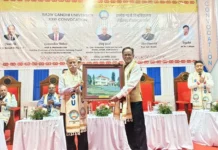[ Tom Simai ]
World War-II was spreading like a wildfire across the fragile and frightened globe. Far away from the western civilization, the remotest corners of Southeast Asia were also exposed to similar blitzes. In the northernmost part of it, Japan crushed the sluggish resistance put up by the forces and easily occupied Burma.
The occupation of Burma enabled the Japanese army to shred the solitary lifeline of the Chinese army, the Burma Road. The Burma Road was the last supply line of communication and military resources between China and the outside world.
The Burma Road
In 1937, after sporadic fighting for more than a decade, the Sino-Japanese conflict turned into a full-fledged war. With a superior battle force, Japan captured most of coastal China in a short duration and totally suppressed the original supply route, which coerced the Chinese army to construct a new route that will ascertain the continued supply of food and war materials. The new military supply route from Kunming to Lashio was built by Chinese workforce stone by stone and it came to be known as Burma Road.
The sabotaging of the Burma Road was an ominous sign for the Chinese forces fighting at the border as it stagnated all the reinforcement activities. For the allied war planners, it was a top priority to keep China active in the war because their involvement kept approximately 800,000 Japanese troops totally engaged at the frontline. Without China tackling them, it was certain that these trained combatants would have been used elsewhere creating newfangled complications for the allied troops. And to keep the Chinese army active at the war front it was extremely necessary to find an alternate route to revivify the depleting supplies and resources.
In such a desperate backdrop, the only option left on the table for allied war planners was the aerial route that passed through the mountainous region of eastern Himalaya. In order to avoid the Japanese fighters, the allied military transport aircrafts filled with cargo had to navigate through the perilous flight path called The Hump. Flying over The Hump proved to be an extremely hazardous undertaking for the allied flight crews. This precarious patch has mercilessly obliterated many pilots and planes. It is said that nothing like it has ever occurred in wartime.
The regular confrontation with the perilous situation while flying over the hump contributed in the swift creation and construction of a new land supply route from India to connect it with the Burma Road. As a result of the urgency, a new land route was established from Ledo to Kunming which was christened as Ledo Road and later it was renamed as Stilwell Road at the suggestion of Chinese Generalissimo Chiang Kai-shek, in honor of American General Joseph W. Stilwell, Commander of the China-Burma-India Theater and Chief of Staff to the Generalissimo.
The 1726 kilometres long Ledo Road began its existential journey on 16th December 1942. The muddy highway started at 0 point Ledo and ended at Kunming, China connecting with the Burma Road. In between Ledo and Kunming, the massive part of the road falls in Burma and a small stretch in Arunachal Pradesh.
Ledo Road was officially opened on 20th May 1945. It nearly took two and half years from start to finish. By the end of the war, an estimated 147,000 tons of supplies were carried over the muddy road. Interestingly, the road was officially ‘open’ only for three months of the war. In early 1946, the road was deactivated for military use.
The Ledo Road was built by the US Army Engineers, allied forces consisting of British, Chinese and Indians and the native labour from the tea plantation province of Assam. The local tribes of the region also chipped in their support though physical labour.
General Lewis A. Pick, who commanded the road building effort, called it the toughest job ever given to U.S. Army Engineers in wartime.
The accomplishment of building the Ledo Road stands as a testament to the men responsible and the human spirit that made it possible.
On 20th May 2020, the Ledo Road quietly marked the 75th anniversary of its existence. (The writer can be reached at simaitom@gmail.com )



